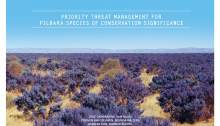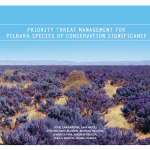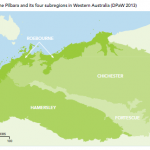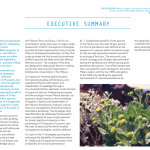Here’s the reason of my long silence from this blog. The report of our 2-year project is now available online (PDF, 10Mo)(The Conversation). The report assesses the cost-effectiveness of 17 feasible strategies for managing threats to the 53 most threatened Pilbara species. Key outcomes are that management likely to provide all species with a >50% chance of persistence costs less than $5 million/year. Amongst the most cost-effective strategies are managing introduced species and fire regimes.
Apart from being the project manager – responsible to deliver on time and on budget – I’ve had a lot of fun developing a method to find the complementary strategies that would minimize the biodiversity loss and the cost (manuscript under review). I hope you will enjoy it! It has been a true collaborative project across multiple organizations and has required the involvement of the whole team from start to the end.
Carwardine J, Nicol S, van Leeuwen S, Walters B, Firn J, Reeson A, Martin TG, Chades I (2014) Priority threat management for Pilbara species of conservation significance, CSIRO Ecosystem Sciences, Brisbane.




